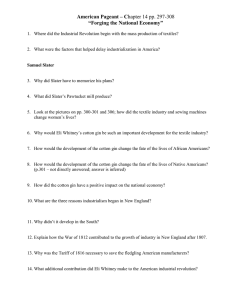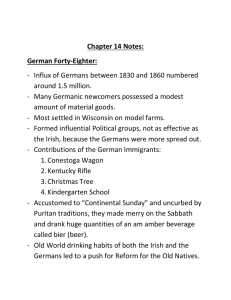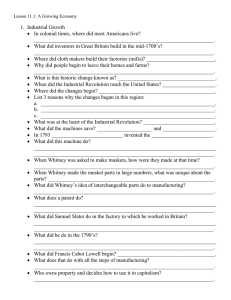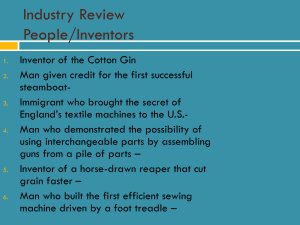File
advertisement
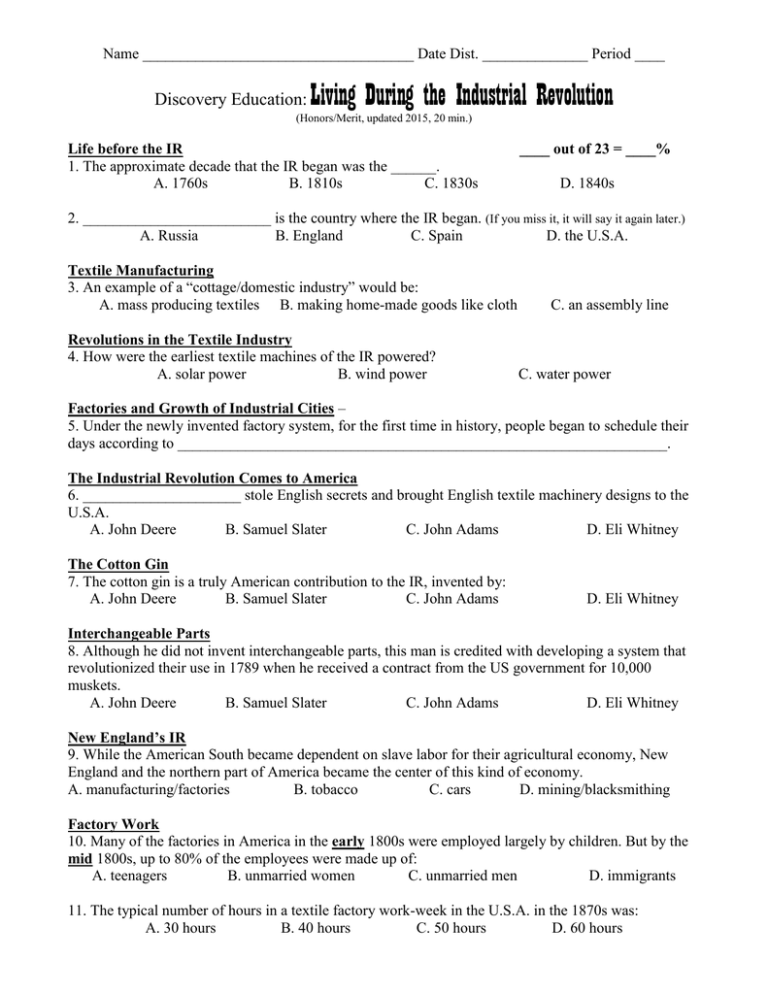
Name ____________________________________ Date Dist. ______________ Period ____ Discovery Education: Living During the Industrial Revolution (Honors/Merit, updated 2015, 20 min.) Life before the IR 1. The approximate decade that the IR began was the ______. A. 1760s B. 1810s C. 1830s ____ out of 23 = ____% D. 1840s 2. _________________________ is the country where the IR began. (If you miss it, it will say it again later.) A. Russia B. England C. Spain D. the U.S.A. Textile Manufacturing 3. An example of a “cottage/domestic industry” would be: A. mass producing textiles B. making home-made goods like cloth Revolutions in the Textile Industry 4. How were the earliest textile machines of the IR powered? A. solar power B. wind power C. an assembly line C. water power Factories and Growth of Industrial Cities – 5. Under the newly invented factory system, for the first time in history, people began to schedule their days according to _________________________________________________________________. The Industrial Revolution Comes to America 6. _____________________ stole English secrets and brought English textile machinery designs to the U.S.A. A. John Deere B. Samuel Slater C. John Adams D. Eli Whitney The Cotton Gin 7. The cotton gin is a truly American contribution to the IR, invented by: A. John Deere B. Samuel Slater C. John Adams D. Eli Whitney Interchangeable Parts 8. Although he did not invent interchangeable parts, this man is credited with developing a system that revolutionized their use in 1789 when he received a contract from the US government for 10,000 muskets. A. John Deere B. Samuel Slater C. John Adams D. Eli Whitney New England’s IR 9. While the American South became dependent on slave labor for their agricultural economy, New England and the northern part of America became the center of this kind of economy. A. manufacturing/factories B. tobacco C. cars D. mining/blacksmithing Factory Work 10. Many of the factories in America in the early 1800s were employed largely by children. But by the mid 1800s, up to 80% of the employees were made up of: A. teenagers B. unmarried women C. unmarried men D. immigrants 11. The typical number of hours in a textile factory work-week in the U.S.A. in the 1870s was: A. 30 hours B. 40 hours C. 50 hours D. 60 hours 12. As the 1800s rolled into the 1900s, these workers (#10) were replaced by: A. teenagers B. unmarried women C. unmarried men D. immigrants Steam Power 13. ___________ was NOT improved by the use of steam engines in the 19th century. A. Transportation B. Farming C. Air quality D. Manufacturing 14. __________ did not increase after the IR. A. Factories B. Production of goods C. Population of rural areas D. Environmental pollution After Film: The Big Picture/Cause and Effect 15. What was the negative effect of the IR on cottage industries? 16. What was one effect of the factory system on family life and society? 17. The cotton gin did the work of an estimated 50 people/slaves. How did the invention of the cotton gin affect slavery in the U.S.? 18. What was/is one benefit of using interchangeable parts? Post Video Questions: Circle One 19. True or False 20. True or False 21. True or False 22. True or False 23. True or False

